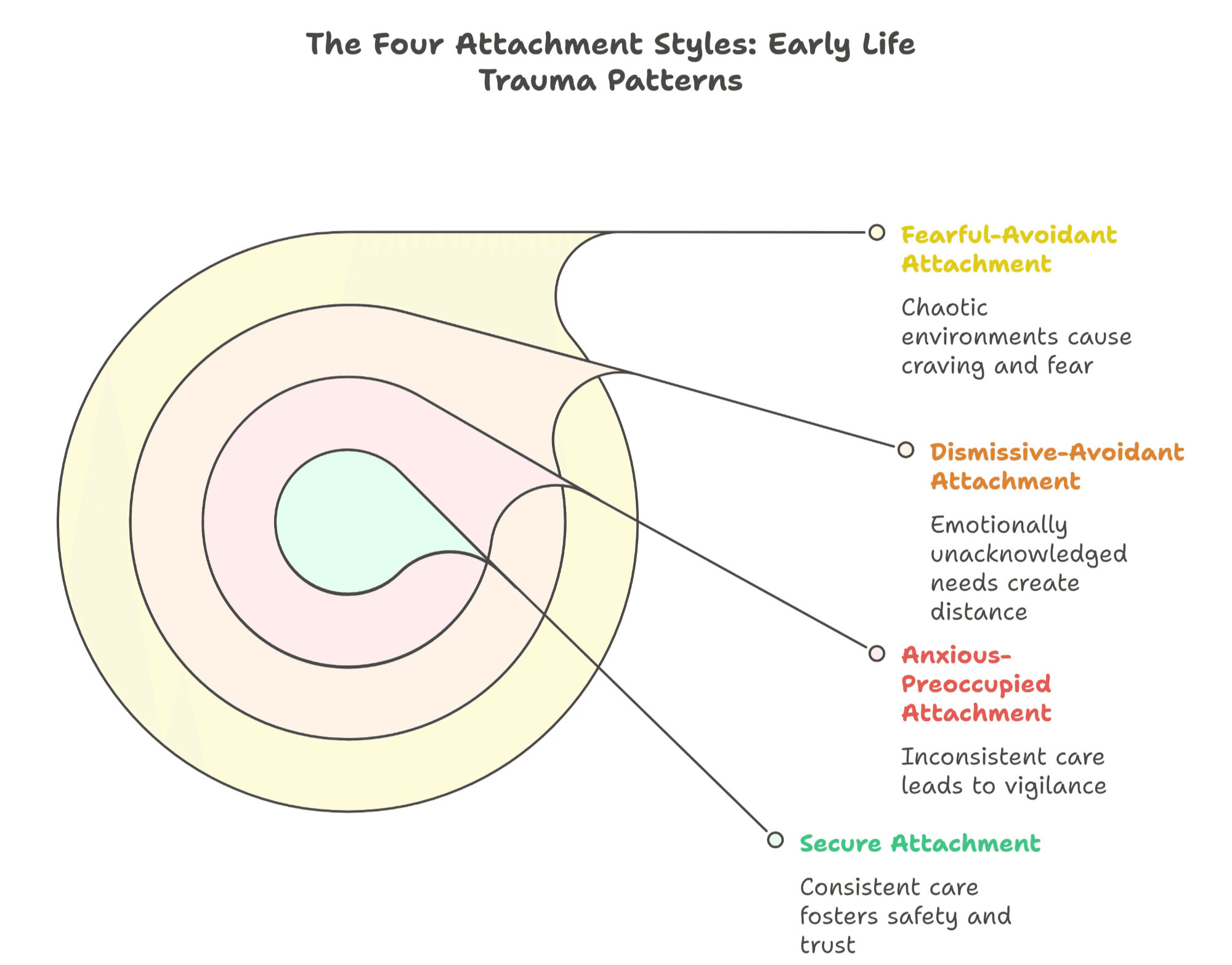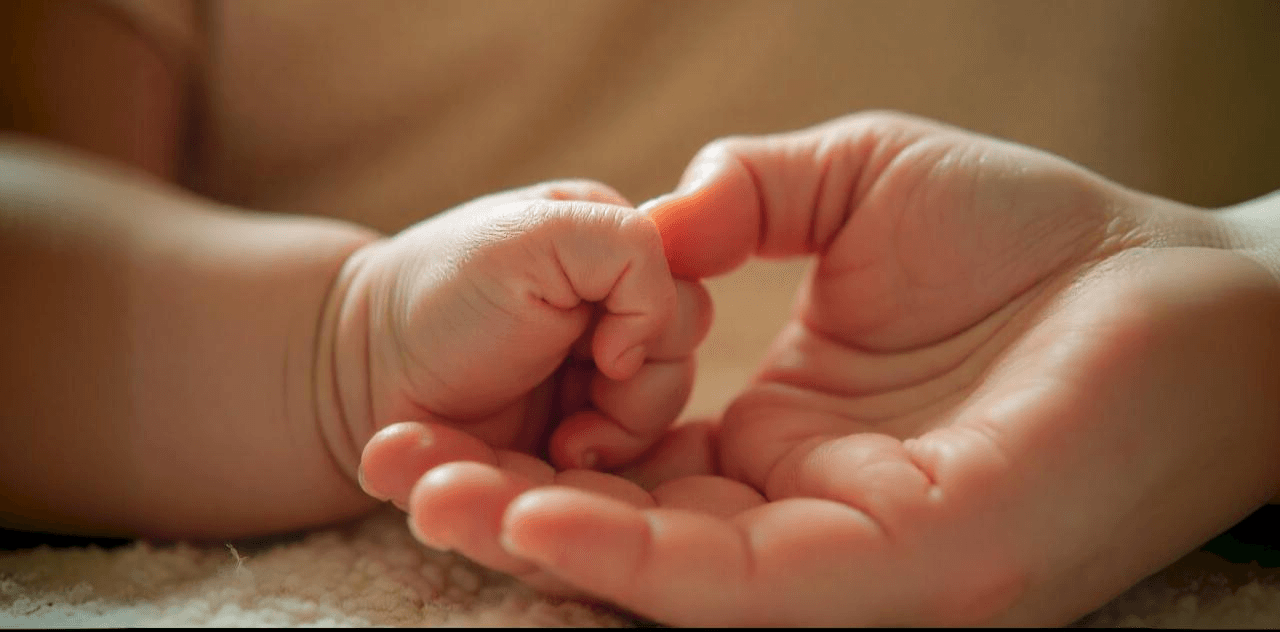Do you constantly worry your partner will leave even when they say they love you?
Do you shut down emotionally the moment someone gets too close?
Do you work yourself to exhaustion because resting feels dangerous?
Do you say yes when you mean no, then resent everyone around you?
No, these aren’t personality flaws. They are survival patterns your body learned before you could even speak.
Last Sunday, our Emotion Reset Circle uncovered something powerful. How your very first breath on Earth shaped the way you love, trust, and handle stress today. And more importantly, how to finally heal it.
Birth Imprints: Where Attachment Styles Begin
Attachment styles don’t start in childhood—they begin at birth. You absorbed your mother’s nervous system for nine months before your first independent breath:
- Stress hormones
- Fears
- Emotional state
Your birth experience created your body’s first safety manual about:
- Whether love is safe
- If closeness means connection or danger
- How to reduce stress when overwhelmed
That manual still runs in the background, shaping every relationship you have.
During the session, we asked: What actually happens at our first breath?
You have been in the womb for nine months—oxygen delivered automatically, needs met without asking.
Then suddenly:
separation,
cold air,
bright lights,
overwhelming sound.
Your nervous system spikes. Your subconscious makes critical decisions about safety and belonging.
One circle participant shared she was born via forceps after difficult labor. Another spent her first days in an incubator, separated from her mother.
These weren’t just birth stories—they became the foundation of their attachment styles.
The Four Attachment Styles: Early Life Trauma Patterns
Secure Attachment forms when babies receive consistent care. The body learns: “I am safe. Love is reliable.” These adults naturally reduce stress and trust others.
Anxious-Preoccupied Attachment develops from inconsistent care. The nervous system stays vigilant, constantly scanning for rejection. These people struggle to reduce stress because their system never learned to settle.
Dismissive-Avoidant Attachment emerges when emotions are not acknowledged. The child learns to minimise needs and prefer distance. So, they disconnect from feelings entirely.
Fearful-Avoidant Attachment forms in chaotic environments. It is the hallmark of deep early life trauma. The body simultaneously craves and fears closeness.
However, these aren’t character flaws. They are intelligent adaptations. But what coping mechanisms kept you safe at birth might be suffocating you now.

Mapping Early Life Trauma: Beyond Memory
We explored what shaped our earliest safety settings. Sandy asked the attendees:
- What was your mother experiencing during pregnancy?
- What emotions ran through your family—fear, worry, grief, hope?
- What was your grandmother’s birth experience?
As C.G. Jung noted, at that early stage we are “not yet self-consciously broken up into individual personalities.” Whatever your mother felt, you felt. Her anxiety became your baseline. Her unresolved early life trauma shaped your attachment styles.
This is why inner child healing must go deeper than affirmations. It must address what the body stored before language existed.
An attendee captured it perfectly: “Hardships shape us, make us more understanding and compassionate, bringing us back to love and soul.”
The Soul’s Classroom: Reframing Early Life Trauma
From a spiritual POV, you chose your parents and ancestral line before birth. Not as punishment, but as curriculum. Your soul signed up to learn about:
- Trust
- Visibility
- Worthiness
- Belonging
This reframe transforms everything.
Instead of “Why did this happen to me?” we ask: “What is my soul here to learn?”
When we understand early life trauma from this lens, we are no longer victims. We are conscious creators rewriting the story.
Rebirthing Breathwork: How to Reduce Stress at the Root
The most powerful part was our 35-minute hypno-breathwork journey. Using rebirthing breathwork—continuous, circular breathing that bypasses the thinking mind—we traveled back to the womb.
Participants experienced their birth again, but this time surrounded by protective light.
This time, held.
This time, safe.
Breathwork releases emotions stored at a cellular level, allowing the nervous system to complete stress cycles frozen for decades. This is how to reduce stress at its source—not managing symptoms, but healing the root.
“Definitely felt some things, seen some things, also became emotional at a point.” —M.
We did something revolutionary for inner child healing: we re-parented our newborn selves. Each person:
- Held their infant self
- Whispered the needed words
- Gave their younger self the safety that might have been missing
“The visualisation with holding the baby was very intense. I’ve never done hypno-breathwork before, and it was powerful.” —H.
What Changes When You Heal Attachment Styles and Early Life Trauma
You are not just changing your attachment style when you upgrade birth imprints through inner child healing. You are healing your lineage. Early life trauma that isn’t resolved transmits to the next generation.
Here’s what becomes possible:
- Reduce stress naturally. Your body learns it doesn’t need survival mode 24/7.
- Secure attachment. You receive love without waiting for the other shoe to drop.
- Real boundaries. You can protect yourself without guilt.
- Self-trust. You stop second-guessing every decision.
- Secure relationships. Because you feel secure within yourself.
Your Nervous System Can Learn Safety
Your brain has neuroplasticity. It is the ability to form new neural pathways throughout life. Through hypnosis and breathwork, you can access the subconscious where early life trauma is stored and update the code.
The breath is the bridge. Continuous breathing shifts your nervous system from fight-or-flight into healing. Attachment styles can change with intentional work. Inner child healing through hypnotherapy provides the felt experience your body needs.
Start Inner Child Healing Today: How to Reduce Stress Now
Try this practice:
- Place one hand on your heart.
- Breathe softly.
- Recall a moment when you felt completely safe or loved.
- Let that feeling wash through your body for 20-30 seconds.
You are teaching your body: This is safe. This is what secure attachment feels like.
Do this daily. Your nervous system is always learning. This simple practice helps reduce stress while building new neural pathways that support secure attachment styles.

Transform Your Attachment Style and Heal Early Life Trauma
Our monthly Emotion Reset Circles make healing accessible for everyone. Whether you are:
- Struggling to reduce stress
- Navigating anxious attachment patterns
- Breaking generational cycles
- Ready for inner child healing
This work changes everything.
Your attachment style isn’t fixed. Early life trauma can be healed. The inner child waiting inside you deserves to finally feel safe.
Ready to heal your attachment style and reduce stress at the root? Book a free strategy call with our lead hypnotherapist Sandy or join our next Emotion Reset Circle.








